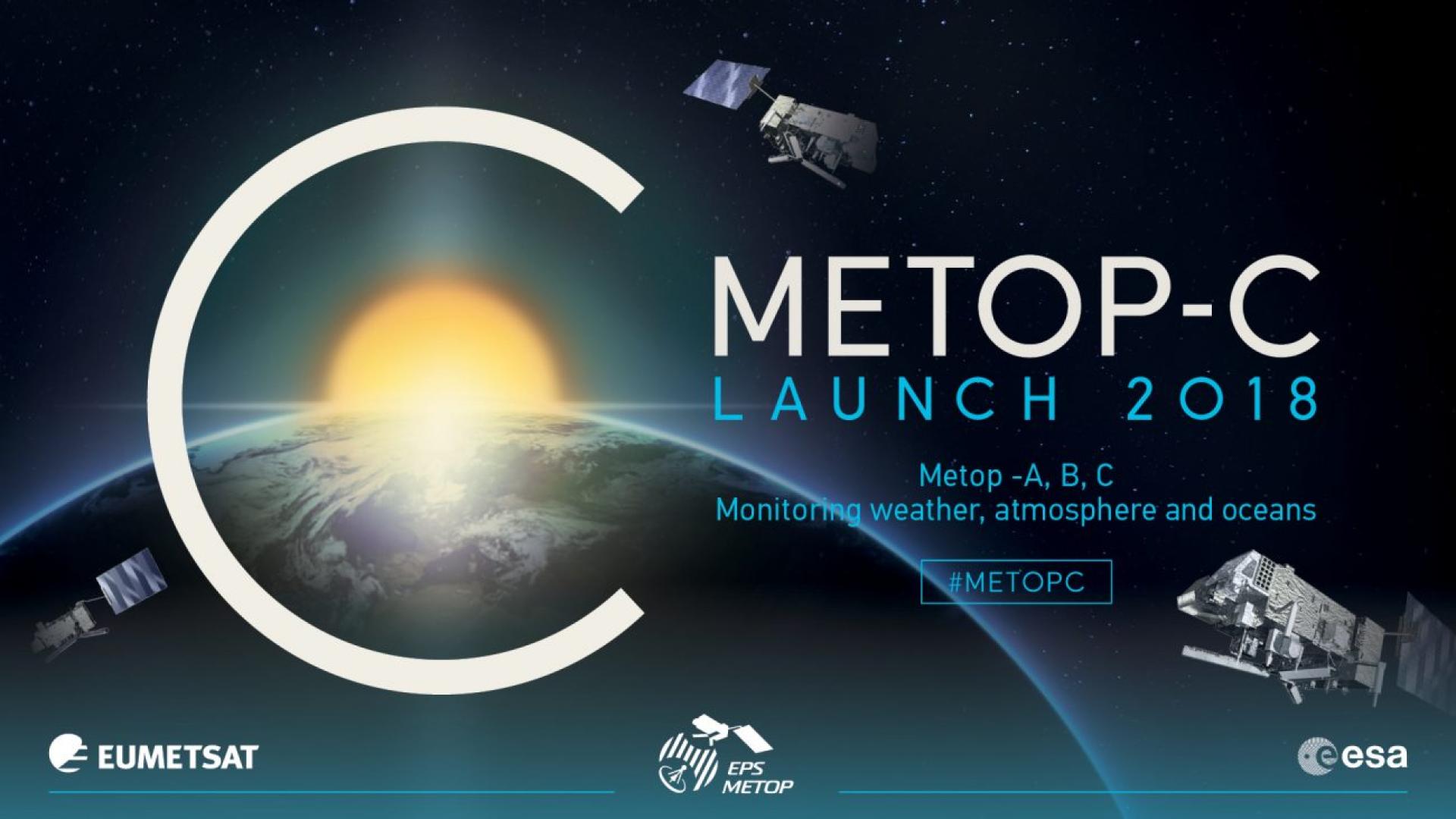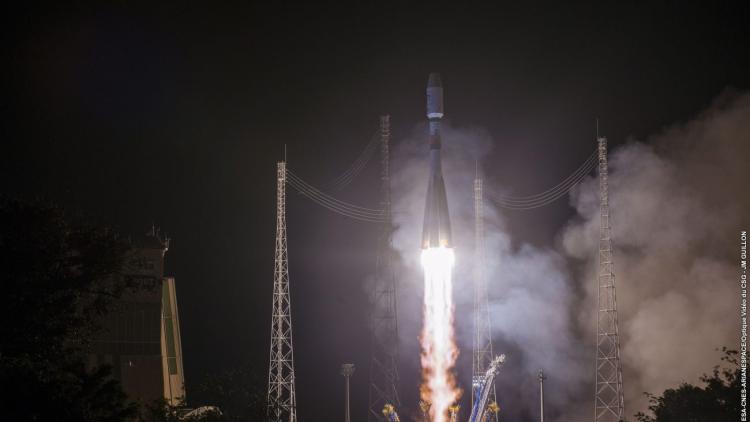
Metop-C – fuelling process set to begin
The Metop-C launch campaign is back in full swing and picking up pace as we approach the 7 November launch date.


Last week, the spacecraft was transferred from the S1B Payload Preparation Facility clean room at the Centre Spatial Guianese (CSG) in Kourou, French Guiana – Europe´s Spaceport - to the S3B Hazardous Preparation Facility, where it will be fuelled this week.
01 November 2023
09 October 2018
This is a significant step that is only taken once the spacecraft is ready for fuelling and only if there is a high degree of confidence that the launch will proceed as planned. Defuelling the spacecraft isn’t an easy process and the fuelled spacecraft is a potential hazard to handle and imposes significant safety constraints.
So, teams from EUMETSAT, ESA and industry convened at CSG to agree that fuelling the spacecraft could proceed. In parallel, Arianespace reviewed the readiness of the Metop-C launcher with the three-stage Soyuz and the Fregat upper stage (Soyuz 2-1B with ST fairing and Fregat version: M) and agreed the fuelling of the Fregat could also proceed.
Metop-C and Fregat, once mated together, will comprise the so-called upper composite which will later be integrated atop the Soyuz launch vehicle.
These reviews don’t just consider the readiness of the spacecraft and the launcher, but include the whole EUMETSAT Polar System (EPS) required to safely operate the satellite in orbit. The readiness of the ground system and operations team at the European Space Operations Centre (ESOC) that will perform the launch and early operations phase are also taken into account.

What type of fuel and how much?
During the fuelling process of Metop-C, which will last two days, around 316kg of anhydrous hydrazine N2H4 – a monopropellant that is a compound of nitrogen and hydrogen – will be loaded into Metop-C’s four on-board tanks.
In liquid form, when passed over a heated catalyst bed, this form of hydrazine decomposes to produce large volumes of nitrogen and hydrogen gas which are expelled to move or reorient the spacecraft.
Using a monopropellant means the propulsion system can be relatively simple in terms of design and so have less mass – fewer tanks, pipes and valves are needed compared to a bipropellant system. Less mass in the propulsion system means more mass can be allocated for payload instruments or to store additional fuel.
Although this is a relatively low power propulsion method, using a monopropellant for Metop perfectly fulfils what is needed to control its orbit and avoid a collision with space debris.
The Fregat propellant filling operations are scheduled to begin on 9 October and will last 10 days until 19 October.
Fregat has a more complex and powerful bipropellant propulsion system to carry Metop-C into its final orbit.
For the main propulsion system of Fregat, about 750kg of dinitrogen tetroxide (N2O4) are filled. Dinitrogen tetroxide is a powerful oxidizer that is hypergolic (spontaneously reacts) upon contact with various forms of hydrazine.
It is reacting with 2 x 375kg of unsymmetrical dimethylhydrazine (UDMH) used on Fregat as hypergolic rocket fuel. Furthermore, helium is used to pressurise the system.
Readiness reviews
Also in the coming days and weeks, EUMETSAT and the partners involved in the launch will take part in a number of reviews, mainly in relation to the readiness of the Soyuz launch vehicle but also involving a number of other important steps as we move ever closer to the launch on 7 November (6 November Kourou time).
We’ll keep you informed.











